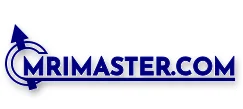Stimulated Echo Artifact MRI
Stimulated echo artifact is a type of MRI artifact that can occur due to improper timing or sequencing of radiofrequency (RF) pulses during image acquisition. It is particularly associated with sequences that utilize stimulated echoes, such as fast spin echo (FSE) or turbo spin echo (TSE) sequences.
The stimulated echo is a phenomenon in MRI where a second echo is generated by applying a refocusing RF pulse after the initial echo. This refocusing pulse rephases the dephased spins, creating a secondary echo. However, if the timing or sequencing of the RF pulses is not accurate, it can lead to stimulated echo artifact.
Stimulated echo artifact appears as ghosting or duplication of structures in the image, typically shifted or mirrored from the actual anatomy. It occurs due to imperfect rephasing of the spins or incomplete cancellation of the stimulated echoes, leading to additional signal contributions and image artifacts.
Here are some strategies to minimize or avoid Stimulated echo artifact :
Sequence optimization: Adjust the sequence parameters, such as echo time (TE), repetition time (TR), and flip angle, to optimize the timing and synchronization of the radiofrequency (RF) pulses. Consult the MRI system’s documentation or sequence optimization guidelines for recommended parameter ranges.
Use appropriate RF pulse design: Ensure that the RF pulses used for excitation and refocusing are properly designed and tailored for the specific sequence. This includes optimizing pulse duration, bandwidth, and shape to achieve accurate spin rephasing and minimize artifacts.
Minimize off-resonance effects: Off-resonance effects can contribute to stimulated echo artifacts. Implement techniques like frequency offset correction or advanced shimming methods to minimize off-resonance effects and improve spin rephasing.
Increase matrix size: Increasing the matrix size can reduce the impact of chemical shift artifact. However, this may also lead to a reduction in SNR.
Quality assurance: Regularly monitor and assess the image quality for the presence of stimulated echo artifacts. If artifacts are observed, evaluate the sequence parameters and consider optimizing them based on the specific imaging requirements and equipment capabilities.
References:
- Shanhong S, et al. Stimulated echo artifact in single-shot echo-planar imaging of the brain. Magn Reson Med. 1998;40(5):732-735.
- Hsu YY, et al. Stimulated echo artifact in diffusion tensor imaging of the brain. Magn Reson Imaging. 2015;33(3):341-347.
